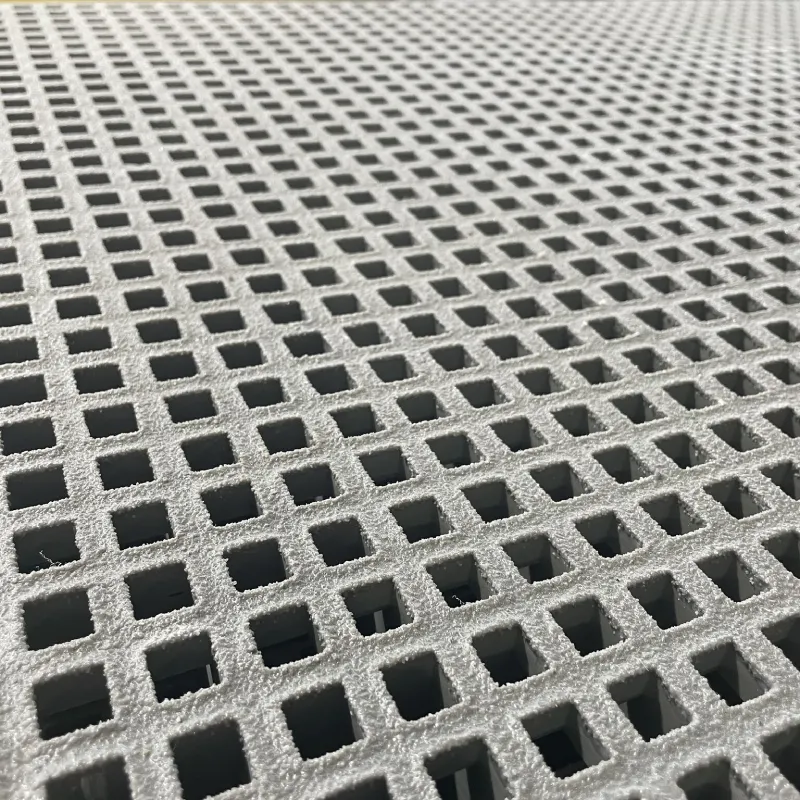loading...
- No. 9, Xingyuan South Street, Dongwaihuan Road, Zaoqiang County, Hengshui, Hebei, China
- admin@zjcomposites.com
- +86 15097380338
- Welcome to visit our website!
Fiberglass Reinforced Plastic Balustrades for Enhanced Safety and Aesthetic Appeal
The Versatility of FRP Balustrades in Modern Architecture
In contemporary architectural design, the choice of materials plays a crucial role in both aesthetic appeal and functionality. One material that has gained traction in recent years is Fiber Reinforced Plastic (FRP). FRP balustrades, in particular, have emerged as a popular option for various structures, from residential homes to commercial buildings. This article will explore the benefits and application of FRP balustrades, positioning them as a solution that meets the demands of modern construction.
FRP is a composite material made from a polymer matrix reinforced with fibers, commonly glass, carbon, or aramid. The resulting material is known for its exceptional strength-to-weight ratio, corrosion resistance, and flexibility. These qualities make FRP an ideal choice for balustrades, which need to provide safety without compromising on style.
One of the key advantages of FRP balustrades is their durability. Unlike traditional materials such as wood or metal, FRP does not corrode, rot, or decay. This longevity is especially beneficial in environments exposed to harsh weather conditions, such as coastal areas or places with high humidity. Furthermore, FRP is resistant to UV degradation, ensuring that colors and finishes remain vibrant over time. As a result, architectural features like balustrades can maintain their integrity and appearance for years, reducing the need for maintenance or replacement.
Another significant benefit of FRP balustrades is their design versatility. Manufacturers can produce FRP in various shapes, sizes, and colors, allowing architects and designers to customize their projects seamlessly. Whether for a sleek, modern high-rise or a classic, ornate balcony, FRP balustrades can be tailored to meet specific design requirements. This flexibility is a game-changer, enabling construction professionals to integrate these balustrades into diverse architectural styles without compromising safety.
frp balustrade

Installation is another area where FRP balustrades shine. Their lightweight nature simplifies the installation process, reducing labor costs and time. Unlike heavier materials that require significant structural support, FRP can often be installed directly onto existing structures with minimal reinforcement. This feature not only lowers project costs but also accelerates project timelines, which is a crucial factor in today’s fast-paced construction environment.
From a safety perspective, FRP balustrades meet rigorous safety standards, making them suitable for both internal and external applications. The material can be engineered to withstand significant impact forces, ensuring that they provide the necessary protection without aesthetic compromise. In addition, the smooth surface of FRP is less prone to sharp edges, which adds an element of safety, especially in settings with children or high foot traffic.
Sustainability is an increasingly important consideration in modern architecture. FRP is an environmentally friendly option, as its manufacturing processes can be optimized to reduce waste and energy consumption. Additionally, the long lifespan of FRP balustrades means fewer resources used for replacements and repairs over time. Many manufacturers are also exploring the use of recycled materials in FRP production, further enhancing its eco-friendly credentials.
In conclusion, FRP balustrades represent a perfect convergence of style, safety, and sustainability in contemporary architecture. Their remarkable strength, durability, and design flexibility make them an attractive option for builders and architects alike. As more stakeholders in the construction industry recognize the advantages of using FRP, it is likely that these balustrades will continue to gain prominence in various architectural applications. Embracing such innovative materials not only enhances the aesthetic value of structures but also contributes to a more sustainable future in building design.
-
The Rise of FRP Profiles: Strong, Lightweight, and Built to LastNewsJul.14,2025
-
SMC Panel Tanks: A Modern Water Storage Solution for All EnvironmentsNewsJul.14,2025
-
GRP Grating: A Modern Solution for Safe and Durable Access SystemsNewsJul.14,2025
-
Galvanized Steel Water Tanks: Durable, Reliable, and Ready for UseNewsJul.14,2025
-
FRP Mini Mesh Grating: The Safer, Smarter Flooring SolutionNewsJul.14,2025
-
Exploring FRP Vessels: Durable Solutions for Modern Fluid HandlingNewsJul.14,2025
-
GRP Structures: The Future of Lightweight, High-Performance EngineeringNewsJun.20,2025
